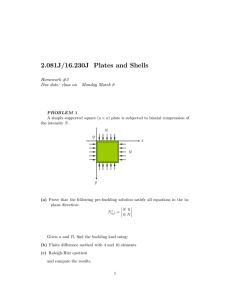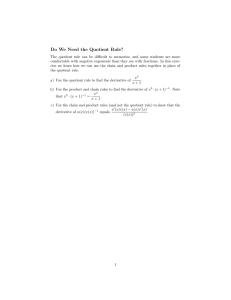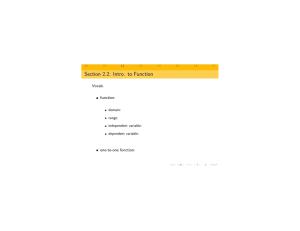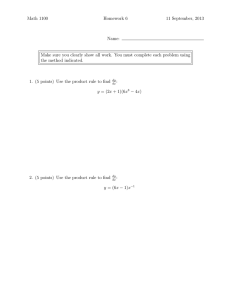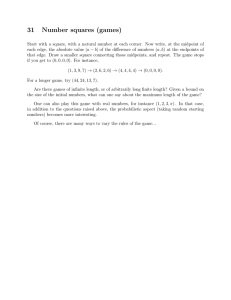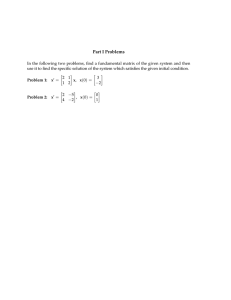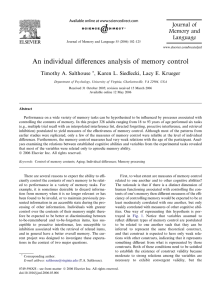Example 2. f (x) = x
advertisement
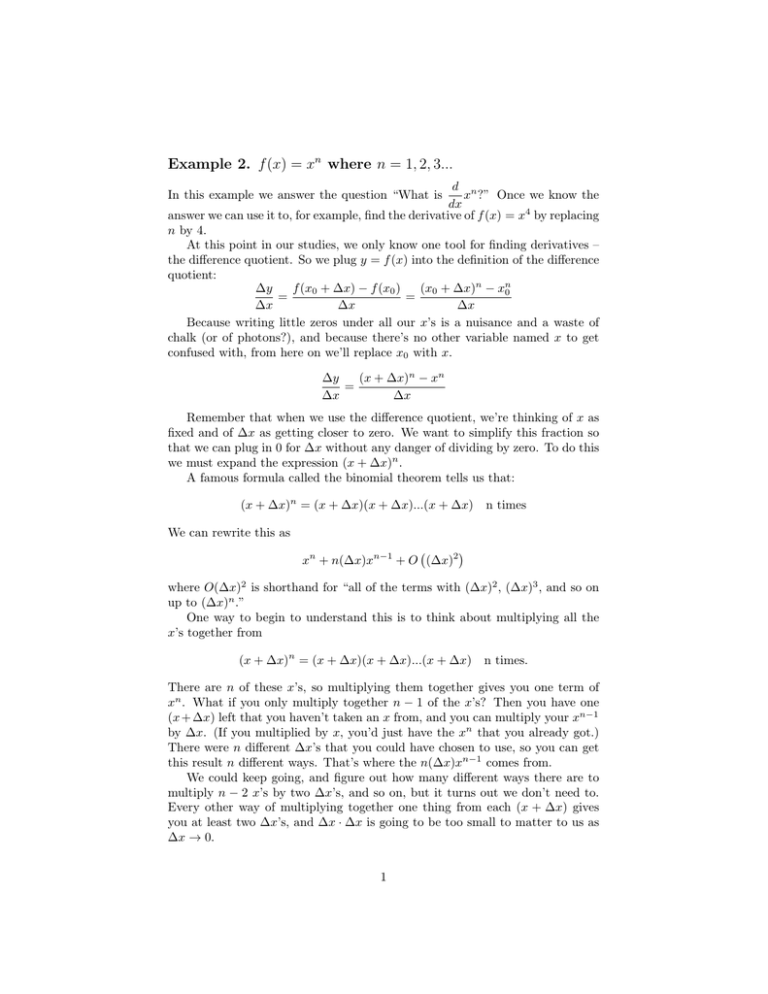
Example 2. f (x) = xn where n = 1, 2, 3... d n x ?” Once we know the dx answer we can use it to, for example, find the derivative of f (x) = x4 by replacing n by 4. At this point in our studies, we only know one tool for finding derivatives – the difference quotient. So we plug y = f (x) into the definition of the difference quotient: Δy f (x0 + Δx) − f (x0 ) (x0 + Δx)n − xn0 = = Δx Δx Δx Because writing little zeros under all our x’s is a nuisance and a waste of chalk (or of photons?), and because there’s no other variable named x to get confused with, from here on we’ll replace x0 with x. In this example we answer the question “What is Δy (x + Δx)n − xn = Δx Δx Remember that when we use the difference quotient, we’re thinking of x as fixed and of Δx as getting closer to zero. We want to simplify this fraction so that we can plug in 0 for Δx without any danger of dividing by zero. To do this we must expand the expression (x + Δx)n . A famous formula called the binomial theorem tells us that: (x + Δx)n = (x + Δx)(x + Δx)...(x + Δx) n times We can rewrite this as � � xn + n(Δx)xn−1 + O (Δx)2 where O(Δx)2 is shorthand for “all of the terms with (Δx)2 , (Δx)3 , and so on up to (Δx)n .” One way to begin to understand this is to think about multiplying all the x’s together from (x + Δx)n = (x + Δx)(x + Δx)...(x + Δx) n times. There are n of these x’s, so multiplying them together gives you one term of xn . What if you only multiply together n − 1 of the x’s? Then you have one (x + Δx) left that you haven’t taken an x from, and you can multiply your xn−1 by Δx. (If you multiplied by x, you’d just have the xn that you already got.) There were n different Δx’s that you could have chosen to use, so you can get this result n different ways. That’s where the n(Δx)xn−1 comes from. We could keep going, and figure out how many different ways there are to multiply n − 2 x’s by two Δx’s, and so on, but it turns out we don’t need to. Every other way of multiplying together one thing from each (x + Δx) gives you at least two Δx’s, and Δx · Δx is going to be too small to matter to us as Δx → 0. 1 Now that we have some idea of what (x + Δx)n is, let’s go back to our difference quotient. (x + Δx)n − xn (xn + n(Δx)(xn−1 ) + O(Δx)2 ) − xn Δy = = = nxn−1 +O(Δx) Δx Δx Δx As it turns out, we can simplify the quotient by canceling a Δx in all of the terms in the numerator. When we divide a term that contains Δx2 by Δx, the Δx2 becomes Δx and so our O(Δx2 ) becomes O(Δx). When we take the limit as x approaches 0 we get: lim Δx→0 Δy = nxn−1 Δx and therefore, d n x = nxn−1 dx This result is sometimes called the “power rule”. We will use it often to find derivatives of polynomials; for example, d 2 (x + 3x10 ) = 2x + 30x9 dx 2 MIT OpenCourseWare http://ocw.mit.edu 18.01SC Single Variable Calculus Fall 2010 For information about citing these materials or our Terms of Use, visit: http://ocw.mit.edu/terms.
